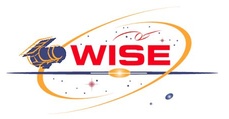

 |
Mosaics from a WSDS-Processed Simulation (vsn 0) |  |
We have processed and mosaicked a set of 280 frames (70 for each WISE band) from Ned Wright's December 2007 simulation. This used Version 0 of the WSDS pipeline. The full simulation covers a region ~8 square degrees near ecliptic coordinates λ=0, β=+30°, and used sources from the 2MASS catalogs, and included cosmic rays and other phenomena yet to be identified. Broadly speaking, the following WSDS modules/subsystems were exercised: executive, simple ingest, instrumental calibration (ICAL), single frame position reconstruction (SFPRex), and the co-adder (AWAIC) with no prior outlier rejection.
Below is a summary of some products from this processing run. All coordinate
grid overlays are in the ecliptic system. In-scan is up/down (north up)
and cross-scan
is left/right. The streak at top left is a diffraction spike artifact
from the 2MASS catalog. The offending star is Beta Pegasi.
1. Full depth-of-coverage map
The color bar at the bottom corresponds to the approximate depth (number
of frames).
2. Band 1, 2 and 3 (blue, green, red) multicolor mosaic of full simulation
3. Central cutout from 2. representative of a proposed ~1.56° x 1.56° WISE Atlas Image
4. Central cutout from 2. representative of a ~47′ x 47′ WISE image frame
5. Band 1, 2 and 4 (blue, green, red) multicolor mosaic of full simulation
6. Central cutout from 5. representative of a proposed ~1.56° x 1.56° WISE Atlas Image
7. Central cutout from 5. representative of a ~47′ x 47′ WISE image frame
8. A frameset (all band frames) corresponding to the cutouts in 4. and 7.
Top left and right: bands 1 and 2.
Bottom left and right: bands 3 and 4.
9. Frame-to-mosaic comparison [bands 1 & 2]
Top row: ~5′ x 5′ region in band-1 input frame, mosaic, and coverage map.
Bottom row: same for band-2.
10. Frame-to-mosaic comparison [bands 3 & 4]
Top row: ~5′ x 5′ region in band-3 input frame, mosaic, and coverage map.
Bottom row: same for band-4 except that region covers ~10′ x 10′.
11. Band-1 only mosaic representative of a ~1.56° x 1.56° Atlas Image
12. Band-2 only mosaic representative of a ~1.56° x 1.56° Atlas Image
13. Band-3 only mosaic representative of a ~1.56° x 1.56° Atlas Image
14. Band-4 only mosaic representative of a ~1.56° x 1.56° Atlas Image
15. Zoom-in on a frame stack
This is a montage of all the band-l frames overlapping the same sky
location measuring ~7.5′ on a side. The circled sources do not
appear on all frames and we question their nature. This inconsistency
also appears in the raw simulation frames. The frames in the montage
are time-ordered from left to right and their filenames (in the format
yydddhhmmss-1.fits) are as follows:
09350030338-1.fits 09350061301-1.fits 09350092224-1.fits 09350105711-1.fits
09350123158-1.fits 09350140645-1.fits 09350154121-1.fits 09350171608-1.fits
09350185055-1.fits 09350202531-1.fits 09350233505-1.fits 09351024428-1.fits
For your information, the region in the above frames is centered on
α = 347.386970°, δ = 27.181573°
16. Zoom-in on mosaic
The same region represented in 15 on the band-1 mosaic. Note the artifacts
resulting from the rogue sources identified in the frames. The spike
artifacts are (unmasked) cosmic rays that survived the averaging process.